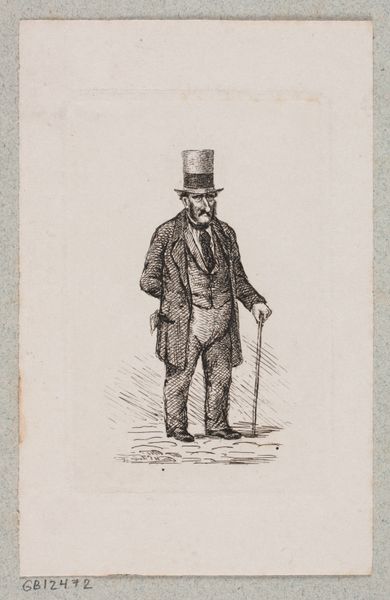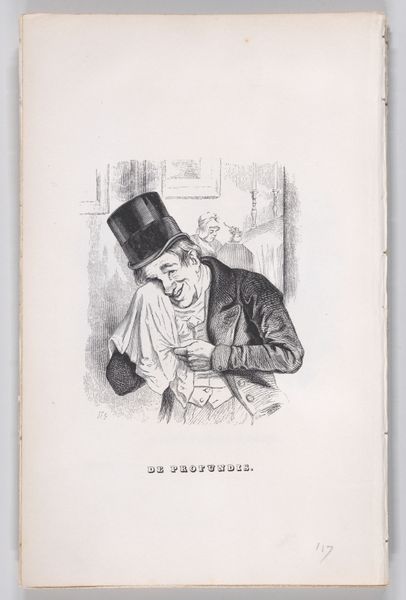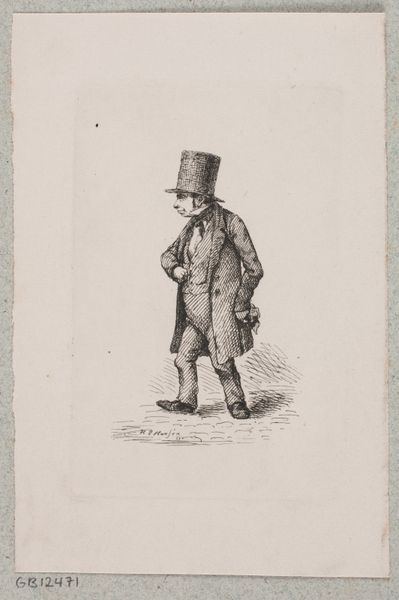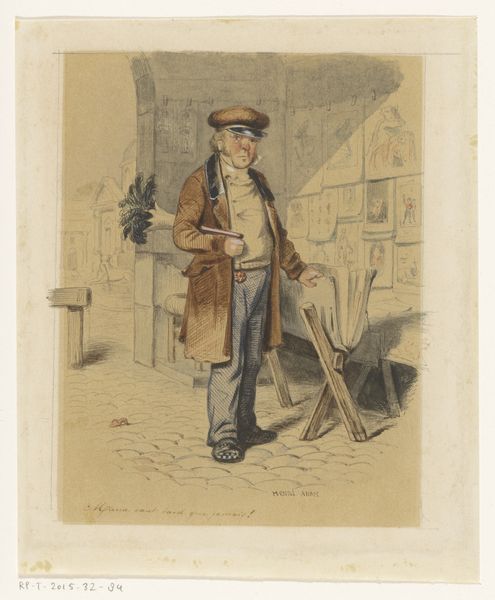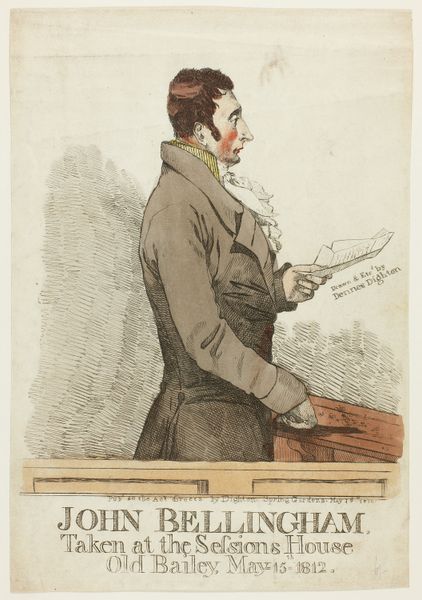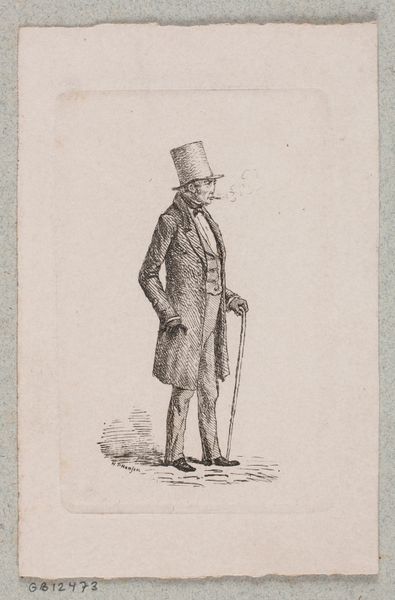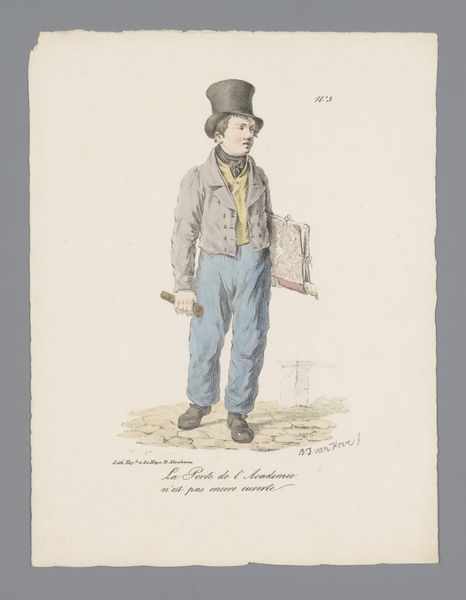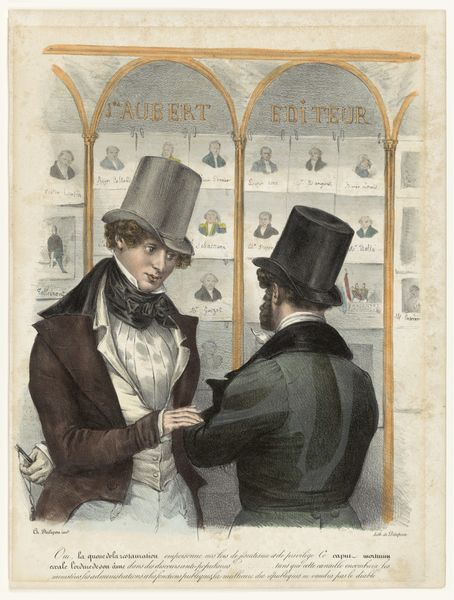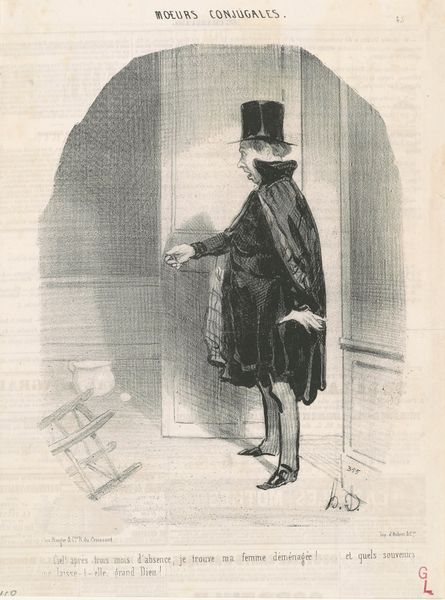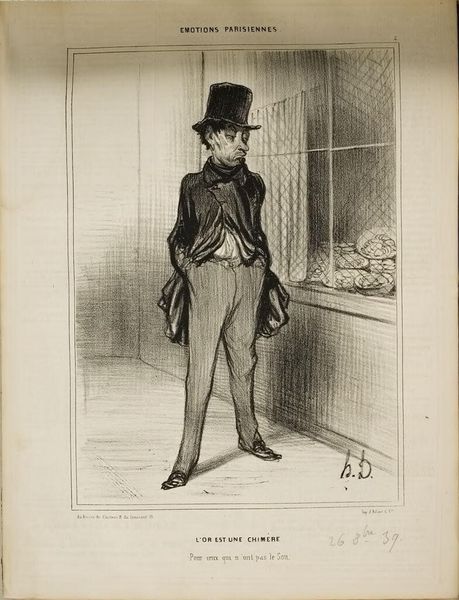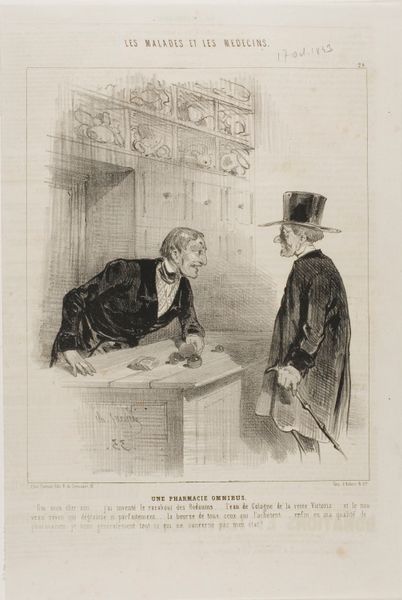
print, engraving
#
portrait
# print
#
figuration
#
cityscape
#
genre-painting
#
engraving
#
realism
Dimensions: height 197 mm, width 124 mm
Copyright: Rijks Museum: Open Domain
Curator: Walter George Mason's "Straatverkoper van kantoorartikelen," or "Street Vendor of Office Supplies," created around 1851, gives us a fascinating peek into the commercial life of the mid-19th century through the medium of printmaking. Editor: Immediately, I’m struck by the image’s almost melancholic air. Despite depicting a commercial transaction, the somber color palette and the solitary figure of the vendor evoke a sense of isolation. The lines, so precisely etched, render a kind of subdued elegance. Curator: Indeed. Looking at the vendor’s attire and the assortment of goods on display, the image speaks volumes about the rise of a literate urban population and the corresponding growth of the print industry catering to their needs. He is centrally placed and idealized—perhaps reflective of changing economic power at the time? Editor: The formal arrangement does create a sense of balance, though the subject is ever-so-slightly off-center. Observe how Mason masterfully uses hatching and cross-hatching to delineate form and create tonal depth. There is an inherent beauty in how he’s captured textures, the rough grain of the table juxtaposed with the smooth covers of the books. Curator: From a social history point of view, one can’t help but wonder about the vendor’s place in society. Was he an independent entrepreneur or working for a larger firm? How would people interact with public spaces when vendors such as these would be part of it? It certainly suggests a certain democratisation of information facilitated by a shift to industrial society. Editor: I would contend it may serve more to signal bourgeois virtue through labor and market economy values. What meaning does the hat lend him? The very presentation of paper, pens, and books signals knowledge. It gives authority to his claim of being capable of supporting himself. This all reinforces the social hierarchy within burgeoning markets. Curator: Yes, exactly, those visual markers of class are interesting, but the very act of capturing everyday life elevated the ordinary citizen in portraiture. The print itself, made accessible through mass production, democratized art appreciation. The work’s existence speaks to art's potential influence at that time, reflecting changes but also initiating dialogues. Editor: Very insightful, it’s pieces like this that make you consider the deeper relationships of formalist theory with critical and sociological analyses of that same space in time. Curator: Precisely; a look into the commercial but also society at work—accessible by those purchasing such prints and perhaps those represented within.
Comments
No comments
Be the first to comment and join the conversation on the ultimate creative platform.
